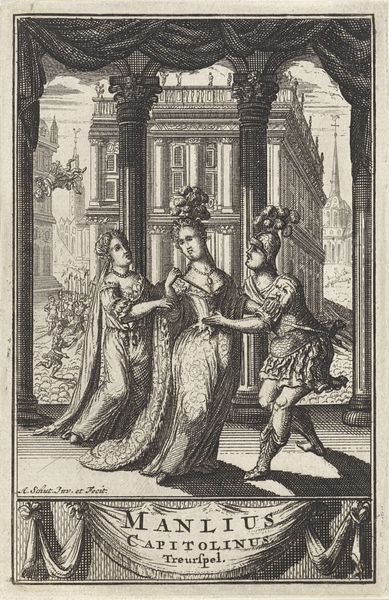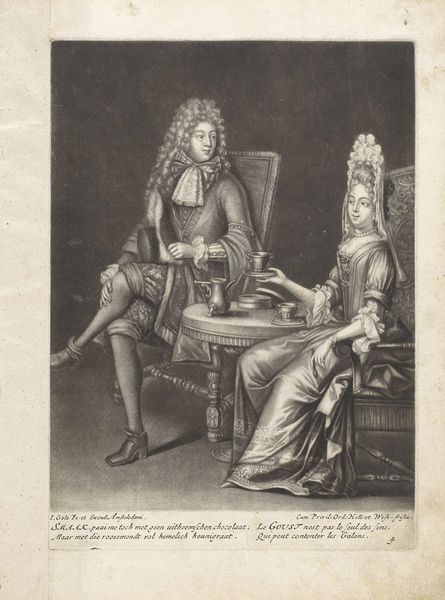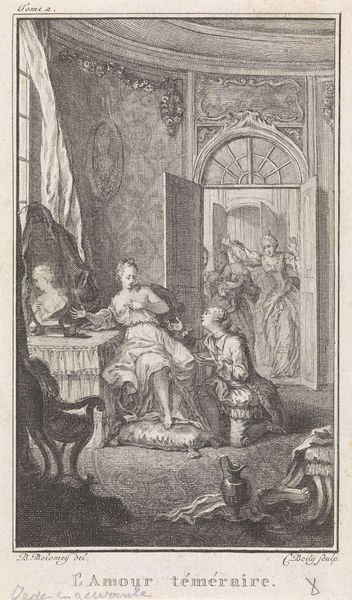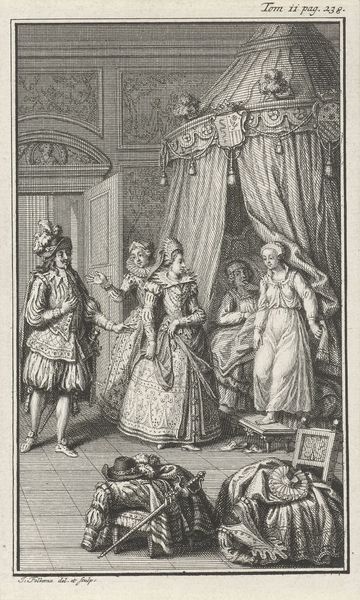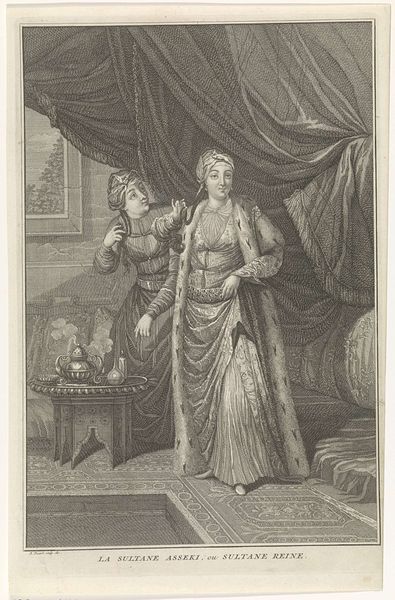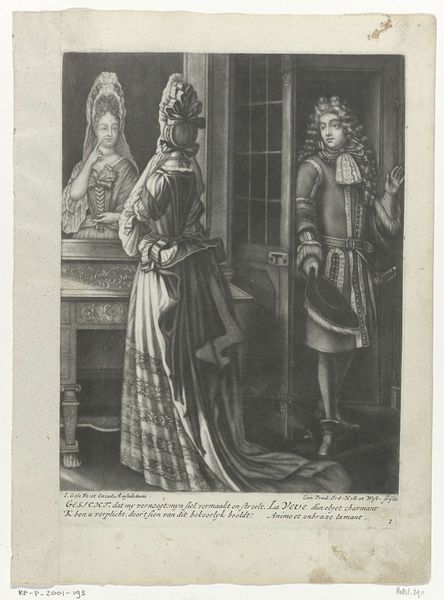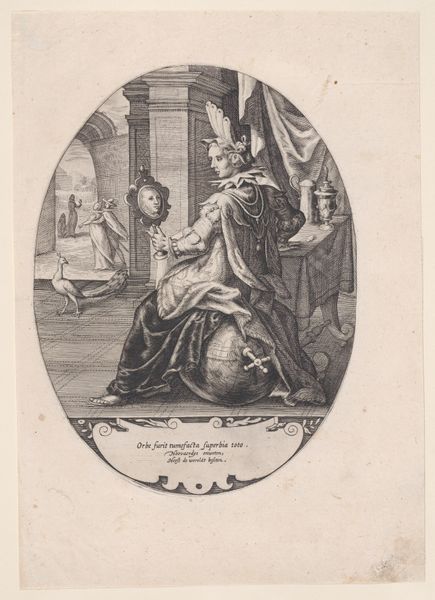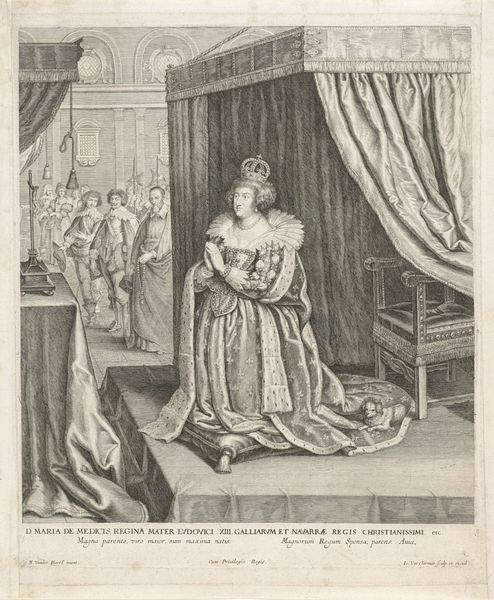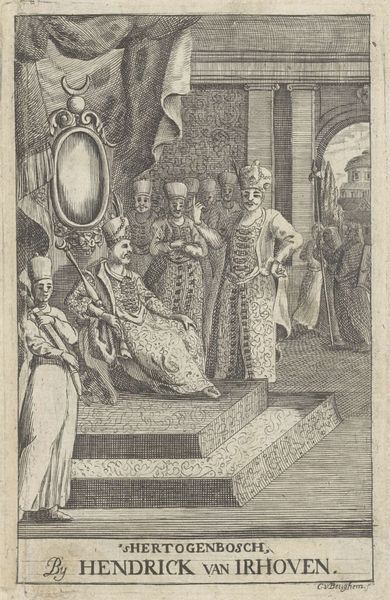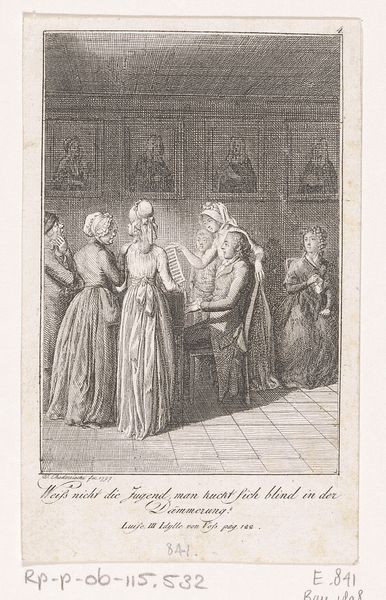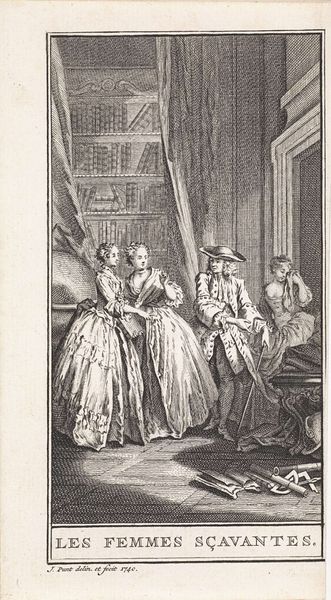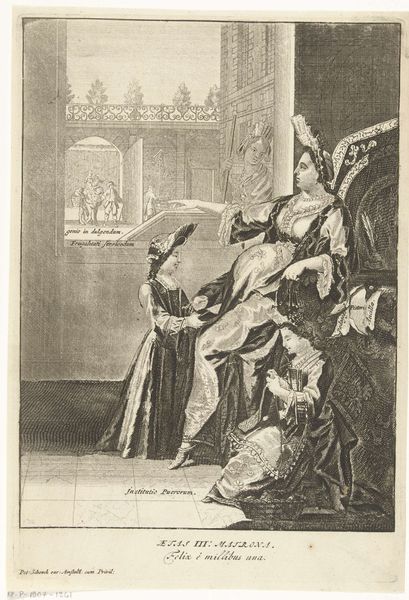
print, engraving
#
portrait
#
baroque
# print
#
old engraving style
#
genre-painting
#
dress
#
engraving
Dimensions: height 294 mm, width 210 mm
Copyright: Rijks Museum: Open Domain
Editor: This engraving, "Le Caquet des femmes" by Nicolas Arnoult, was made sometime between 1682 and 1722. It depicts three elegantly dressed women in what seems to be a bedchamber. The level of detail is remarkable! I'm curious – how do you interpret this work, considering its social context? Curator: It's fascinating, isn't it? The title translates to "The Gossip of Women," immediately placing the image within a complex framework of gender and social commentary. Consider the historical period. In 17th and 18th century Europe, women’s gatherings, particularly in domestic spaces, were often viewed with suspicion. This engraving plays into that discourse, doesn't it? Editor: Absolutely, and it’s interesting to consider who the intended audience might have been, and their existing biases! Curator: Exactly! The clothing, the hairstyles, the elaborate setting – all indicate a certain level of affluence and social standing. What power dynamics do you think are at play here? Is this a private, intimate moment of female bonding, or is it being presented to us, the viewers, as something scandalous or frivolous? Editor: I see your point. It's not just a depiction of women talking; it’s a statement about how women, especially those with privilege, were perceived and portrayed in that era. The title seems almost judgmental now, imposing a narrative rather than simply observing. Curator: Precisely. It highlights the tension between private female spaces and public male perception. Furthermore, we might ask: Does this image challenge or reinforce existing stereotypes about women? And what does it tell us about the role of art in shaping those perceptions? It serves as a potent reminder that images, especially historical ones, are never neutral. Editor: Thinking about it that way opens up so many questions about the power of representation and how social narratives get constructed. Curator: Yes, and it encourages us to think critically about whose stories are being told and whose voices are being amplified. Editor: Thanks, I now have a completely different understanding of the print! Curator: It’s a reminder that art, even something that appears simple, can be a powerful tool for exploring and challenging social norms.
Comments
No comments
Be the first to comment and join the conversation on the ultimate creative platform.
